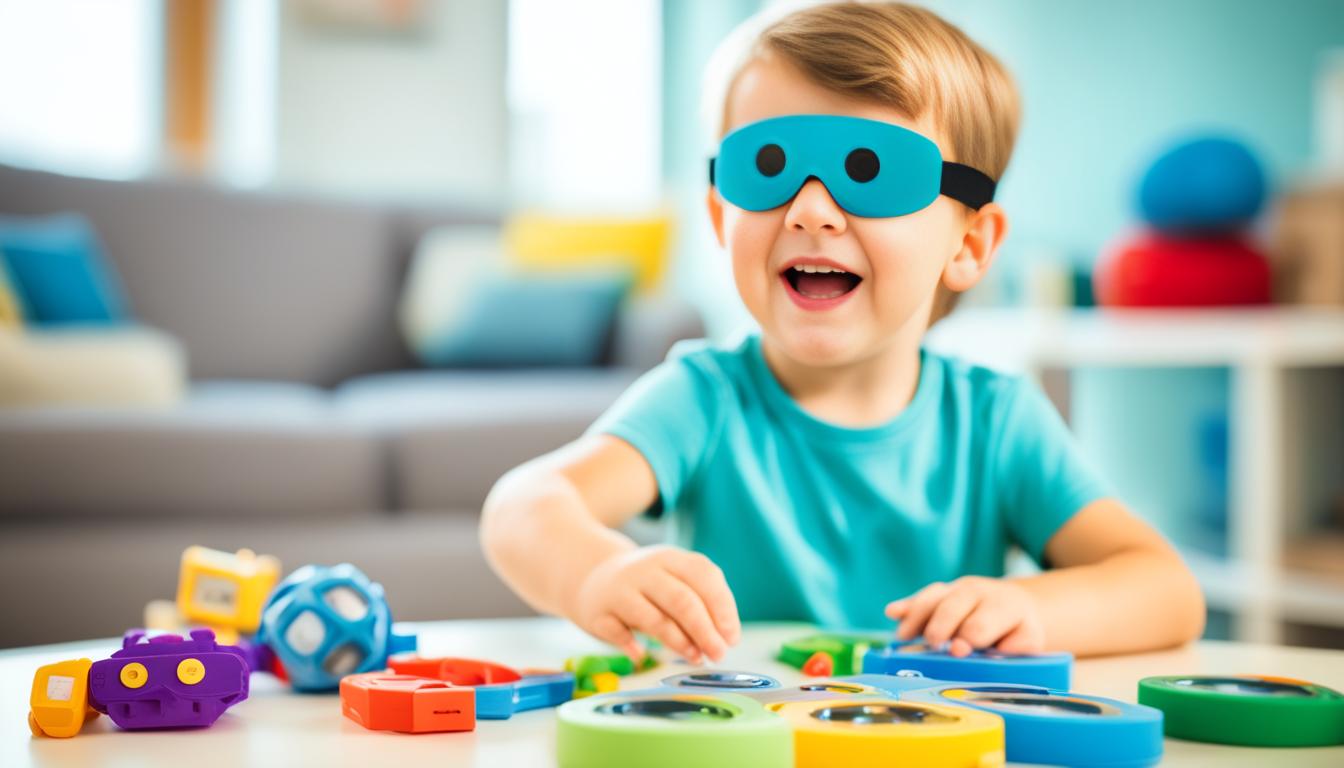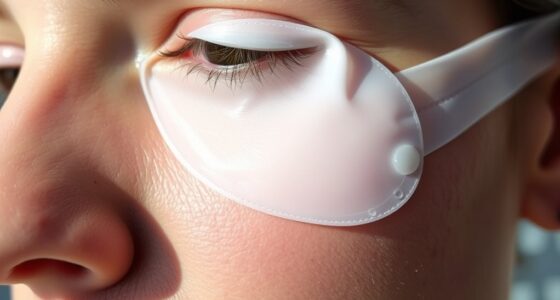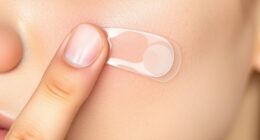Eye patch therapy isn’t just about covering one eye; it can transform your child’s vision if amblyopia is detected early. Historically effective, this method encourages the weak eye to strengthen, leading to improved visual acuity. Recent research shows that shorter patching durations can achieve impressive results while being more enjoyable for your child. Plus, emerging treatments are available that further enhance outcomes. Discovering these surprising benefits can make all the difference for your child’s eye health.
Key Takeaways
- Eye patch therapy effectively encourages the use of the weaker eye, enhancing visual acuity in children with amblyopia.
- Early intervention through patching significantly improves treatment outcomes, especially in children under seven.
- Shorter daily patching durations can achieve results comparable to longer sessions, improving compliance and reducing stigma.
- Combining patching with glasses or new technologies like virtual reality optimizes treatment effectiveness and engagement.
- Personalized patching strategies enhance comfort and satisfaction, making therapy more appealing for families.
The Historical Significance of Eye Patch Therapy

Although eye patch therapy might seem like a modern solution for vision issues, its roots trace back to around 900 A.D. This method, known as penalization therapy, occludes the stronger eye to encourage the use of the weaker one.
Eye patch therapy, tracing back to 900 A.D., encourages the use of the weaker eye through penalization.
Over the centuries, techniques and materials have evolved, but the goal remains the same: to stimulate visual pathways and improve acuity. Historically, eye patches weren’t just for amblyopia; they also aided in healing post-surgery and treating double vision. While full-time patching was common for severe cases, today’s approaches have adapted. Research supports that patching is especially effective in children under seven, emphasizing early intervention for the best outcomes. Additionally, studies show that many patients have experienced patching as part of their treatment, showcasing its widespread application.
Your understanding of this therapy’s rich history highlights its enduring relevance.
Understanding Amblyopia and Its Causes

Eye patch therapy has long been a recognized treatment for amblyopia, but understanding this condition and its causes is essential for effective management.
Amblyopia, often called “lazy eye,” is a vision disorder where one eye’s nerve pathway doesn’t develop properly, affecting about 2-4% of children worldwide. Common causes include strabismus, which misaligns the eyes, and refractive errors like nearsightedness. Strabismus (crossed eyes) is the most common cause of amblyopia. Visual deprivation from cataracts or genetic factors can also play a role. Early childhood is the vital period for addressing amblyopia, as untreated cases can lead to permanent vision loss.
Recognizing symptoms like blurred vision or misaligned eyes allows for timely intervention, making it imperative to stay informed about this condition.
Recent Advances in Patching Research
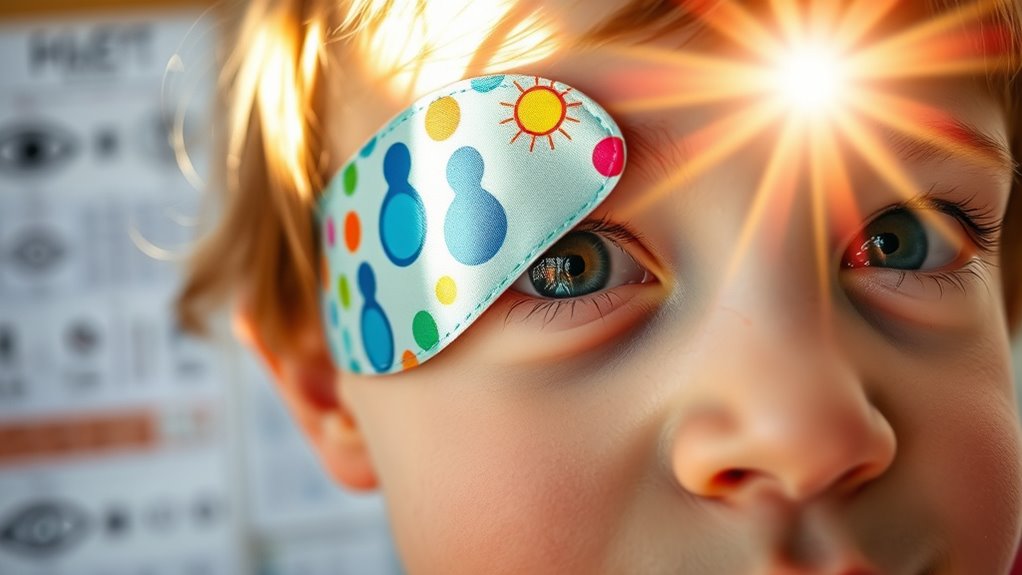
As researchers explore new avenues in amblyopia treatment, recent advances in patching research are showing promising results that could transform how we approach this condition.
Studies reveal that patching for just two hours a day can be as effective as six hours for moderate amblyopia, improving compliance and reducing social stigma. This shorter duration doesn’t compromise vision improvement in children, making it a more manageable option. Additionally, combining patching with glasses or atropine eye drops enhances treatment outcomes and speeds up visual acuity improvements. Notably, earlier patching has been shown to lead to improved vision and higher treatment satisfaction in children.
New technologies like virtual reality are also emerging, potentially offering faster results than traditional methods. These advances aim to create personalized, effective treatment plans that cater to individual patient needs and preferences.
The Advantages of Early Patching
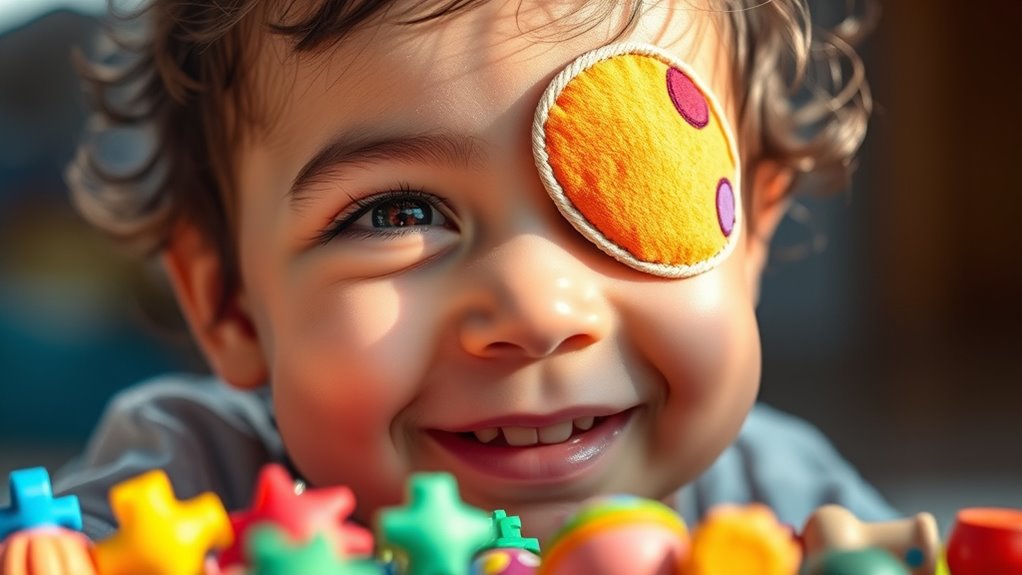
Starting patching therapy early can greatly enhance outcomes for children with amblyopia. By initiating treatment sooner, you can improve visual acuity and stimulate the development of the weaker eye. Families often prefer early patching, as it reduces reliance on glasses and can lead to shorter overall treatment durations. The brain’s increased plasticity in younger children allows for more effective adaptation and learning, maximizing benefits during this critical development period. This approach is supported by research indicating that early patching is associated with improved vision and higher treatment satisfaction. Personalized care becomes possible, tailoring patching duration and frequency to your child’s unique needs. Regular monitoring guarantees adjustments are made, and various patch types can address comfort concerns. Early intervention not only boosts vision but also promotes better coordination between the eyes and brain, paving the way for a brighter visual future.
Exploring Alternative Treatments for Amblyopia

A variety of alternative treatments for amblyopia have emerged, offering new hope for children facing visual challenges. Traditional patching alone mightn’t tackle the brain’s underlying issues, leading to potential relapses. That’s why new technologies like virtual reality (VR) and binocular therapies are gaining traction. VR treatments, such as Luminopia One, engage kids with popular shows and can greatly improve visual acuity in just weeks. Binocular approaches, including interactive games, help reduce interocular suppression, making therapy enjoyable and effective. Additionally, binocular approaches yield better clinical outcomes than patching alone, providing a comprehensive method for treatment. Pharmacological options like atropine and levodopa-carbidopa provide additional alternatives for those who struggle with patching. These dynamic treatment plans can enhance outcomes and guarantee a brighter visual future for your child.
Frequently Asked Questions
How Long Should a Child Wear an Eye Patch Daily?
When it comes to how long your child should wear an eye patch daily, it typically ranges from 3 to 6 hours, depending on their age and the severity of amblyopia.
For younger kids under 4, less than three hours might be enough.
It’s essential to follow your doctor’s recommendations and monitor your child’s progress.
Can Adults Benefit From Eye Patch Therapy for Amblyopia?
Yes, adults can benefit from eye patch therapy for amblyopia, although the results mightn’t be as pronounced as in children.
If you’re considering this treatment, you should patch your stronger eye for a few hours daily while engaging in near visual tasks.
Combining patching with other therapies, like perceptual learning or binocular vision exercises, may enhance your outcomes.
What Are the Potential Side Effects of Patching Therapy?
You might think patching therapy is straightforward, but it comes with potential side effects.
You could experience skin irritation or discomfort from extended wear. Emotionally, it might lead to feelings of distress or low self-esteem, especially in children.
Vision can blur temporarily, making daily tasks challenging. Additionally, compliance issues may arise due to frustration.
It’s crucial to weigh these factors when considering patching as a treatment option for amblyopia.
How Can Parents Encourage Their Child to Wear the Patch?
To encourage your child to wear the patch, start by explaining its purpose in a fun and relatable way.
Use positive reinforcement, like stickers or small rewards, to motivate them.
Establish a consistent routine and engage them in enjoyable activities while they wear the patch, such as playing games or reading.
Create a supportive environment by involving family and friends to help normalize the experience, making it easier for your child to comply.
Is Eye Patch Therapy Effective for All Types of Amblyopia?
Did you know that about 40% of children undergoing six hours of daily patching improve by two or more lines on vision tests?
Eye patch therapy is effective for moderate and severe amblyopia, and it also helps with anisometropic amblyopia when combined with corrective lenses.
However, its effectiveness decreases in older children. Early intervention is key, so starting treatment during critical visual development periods can lead to better outcomes for your child.
Conclusion
Incorporating eye patch therapy into your child’s treatment can be like planting a seed for their visual future. By understanding amblyopia and embracing early intervention, you’re nurturing their vision to blossom. While alternative treatments exist, the benefits of consistent patching can’t be overlooked. As you explore these options, remember that every small effort contributes to clearer sight and a brighter outlook. Don’t miss out on the surprising advantages that eye patch therapy can bring to their life.


